Landscape Installation – Necessary Details
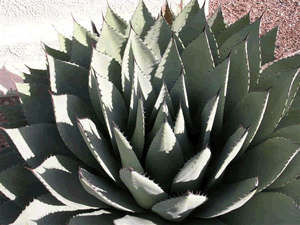
Photographer: Cado Daily
Take some time to plan your new design. Use the checklist on Getting a Good Start and Organizing Your Design. If you are part of a homeowners’ association obtain a copy of the codes, covenants, and restrictions (CC&Rs) to find out how they affect your garden plans. Consider the following installation tips:
1) Prepare your site
| • | Measure, mark, and install hardscape areas first. Determine where you may need “sleeves” to run irrigation lines under pathways, patios, etc. |
| • | Prepare and grade the soil – consider adding earthworks (grading) to utilize rainwater. See the section on Rainwater Harvesting for more information. Be sure to call Blue Stake (1-800-STAKE-IT) before digging to identify any utility lines. |
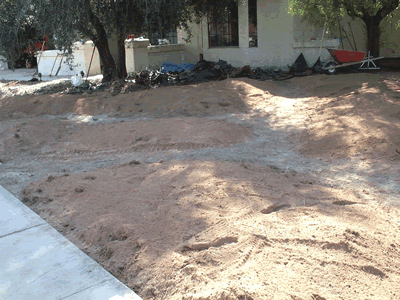
Photographer: Kathleen Moore
Gentle contours in the landscape can add interest and help to collect rainwater.
2) Thoroughly kill the grass WHEN CONVERTING TO XERISCAPE
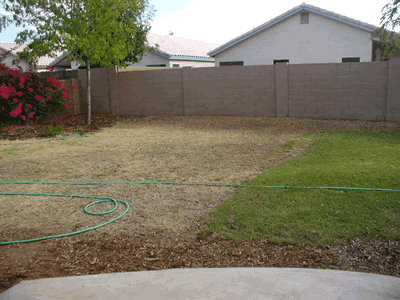
Photographer: Jake Kupiek
| • | Use several methods of grass elimination to increase success of turf removal. |
| • | When using a post-emergent application of glyphosate, a contact herbicide sprayed directly on the grass, best results are achieved when the grass is actively growing. Two or more applications are recommended, allowing two weeks between applications. Watering the grass between applications to “green it up” will increase the effectiveness of the herbicide. |
| • | Once the grass has been sprayed and killed, dig out the top three to four inches of grass or scalp the grass close to the ground. |
| • | Where appropriate, plan mounding over grass areas to help “smother out” any future growth. When mounding over grass, it is also helpful to layer cardboard under the mound to provide an additional barrier to any future grass growth. |
3) Install Irrigation
| • | A pressure anti-siphon valve installed according to city code is recommended over the use of an atmospheric anti-siphon valve to allow greater protection and flexibility in the installation of the irrigation system. |
| • | Install copper pipe from the water source to the anti-siphon valve and copper pipe from the anti-siphon valve to the ground. Use PVC underground. If PVC is used above ground, use schedule 40 and paint all PVC with latex paint to protect it from the sun. |
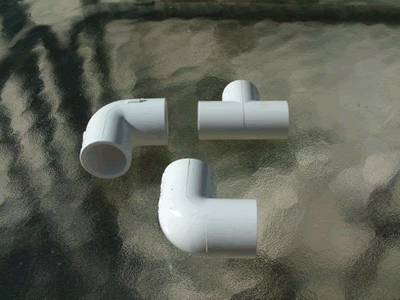
| • | When installing an irrigation system, group plants of common water usage on the same valve. Use a separate valve for trees. |
| • | When possible, vegetable/flower gardens or other high usage plants should be on a separate valve. |
| • | For trees and large shrubs install several (2 to 4) emitters halfway between the tree trunk and the end of the root ball. Be sure to include extra lengths of tubing to relocate the emitters out further as the tree grows. Also be prepared to install additional emitters as the tree matures. |
| 4) | Plant Trees First |
| • | Then plant large shrubs. Finish with smaller shrubs and groundcover. |
| • | When planting trees, remove the nursery stakes and, if needed, install 2 – 2-inch lodge poles outside of the root ball with connective ties to the tree. See the article on Planting and Staking Trees. |
| • | Carefully place trees and large shrubs to provide shade on the east and west sides of the house and sitting areas, or for other plants needing sun protection. You may also want to provide protection from the prevailing wind by planting on the southwest exposure. |
| • | Be sure to plan for the mature size of the tree and place the tree to avoid overhead wires. |

This tree was planted way too close to the driveway and sidewalk. In a few years, it will be a maintenance nightmare.
| 5) | Install organic or inorganic soil covers |
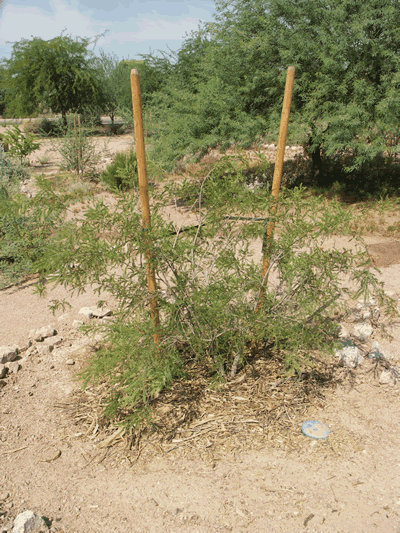
Organic mulch in the form of shredded bark was placed at the base of this tree.
| • | When using organic mulches for soil moisture retention, spread to a depth of 3 to 4 inches. |
| • | When installing rock soil covers, remove dirt from concrete edge of sidewalk to a depth of 3 to 4 inches and then taper the soil away. |
| • | When installing rock, you may want to leave the area around some plants bare so that mulch can be added and leaf litter can collect - shading the soil and plant roots. |
| • | Do not install mulch or rock directly against the tree trunks. |
| • | Do not use plastic between the soil and the mulch layer. It prevents water and oxygen from reaching the roots of plants. |
Jo Miller
Water Conservation Program Manager
City of Glendale